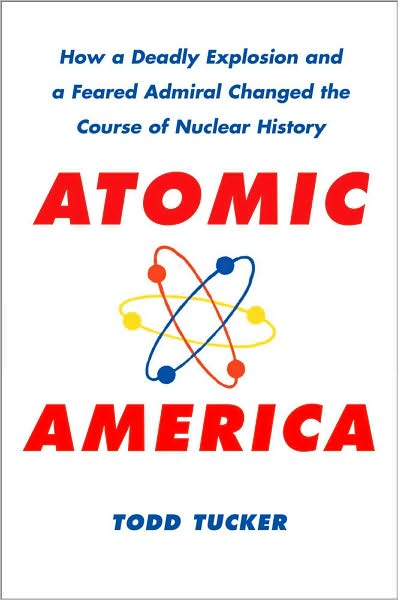

| ATOMIC AMERICA How a Deadly Explosion and a Feared Admiral Changed the Course of Nuclear History Todd Tucker New York: Free Press, 2009 |
Rating: 5.0 High |
|||
| ISBN-13 978-1-4165-4433-3 | ||||
| ISBN 1-4165-4433-X | 277pp. | HC/BWI | $26.00 | |
The author discusses the instructions for removing and replacing the control rod drive mechanism atop the SL-1 reactor.
Armed with the knowledge that the reactor had gone critical, the investigators needed to determine the cause. From the beginning, there was little doubt that the central rod was the culprit, the only rod with the power to start the reactor all by itself. Since Byrnes, Legg, and McKinley were known to be reassembling the rod drives, and since raising that rod was actually part of the procedure, it was a logical conclusion, supported by all the evidence. The procedure for reassembly of the drives required the control rod be raised "not more than four inches." While that is in the procedure, the limit is not given as a warning, and no consequences for violating that step are given. In fact, the sole "caution" in the procedure is a decidedly non-nuclear one, and appears during the thimble removal, when operators are warned, "Caution;1 this item is very heavy and cumbersome and must be carefully balanced during removal." The entire procedure is notable for its brevity; it takes just about one full typed page for its fourteen steps. – Pages 176-78 |
He presents those fourteen steps, as contained in the AEC report on the accident, and I reproduce them here. (The formatting is mine.)
Some things to notice about this procedure:
These deficiencies make it doubly damning that the reassembly instructions amounted to "Do the disassembly in reverse." In addition, this one-step procedure mentions a number of items that never appear in the disassembly instructions. Have a look:
Those last two sentences don't add anything. Any dolt would know that connecting a fluid line improperly can cause leaks. That's why instructions should spell out exactly how to do a proper connection. The evident need for cleanliness in these connections runs counter to the lack of attention to the water that would run from the lines disconnected during rod drive disassembly. And what is "other comparable cleaning agent"? There are too many possibilities that might occur if alcohol is not on hand; acceptable cleaning agents should be specified.
All in all, this is a textbook example of how not to write procedures. Also, if they weren't even proof-read, it's doubtful that anyone walked through them to find out how well they actually worked. The author doesn't say whether any diagrams or illustrations were part of the procedures. I certainly hope so. But unless they were of a significantly higher quality than the written procedures, they wouldn't have been of much use. Indeed, I suspect the entire document was an afterthought provided only because the contract required it. By itself, it would be useful only as a reminder for those who had already learned how to do the work by looking over someone's shoulder.
I would have provided some sort of barrier at the four-inch point to prevent the rods going higher. This could be removable after connections are made. Alternatively, since it's so important not to raise the control rods too far during reassembly, why not drop the mechanism down to the rods instead of lifting the rods to the mechanism? Sadly, almost every design decision about SL-1 seems slapdash.

 To contact Chris Winter, send email to this address.
To contact Chris Winter, send email to this address.